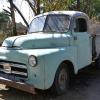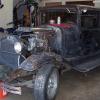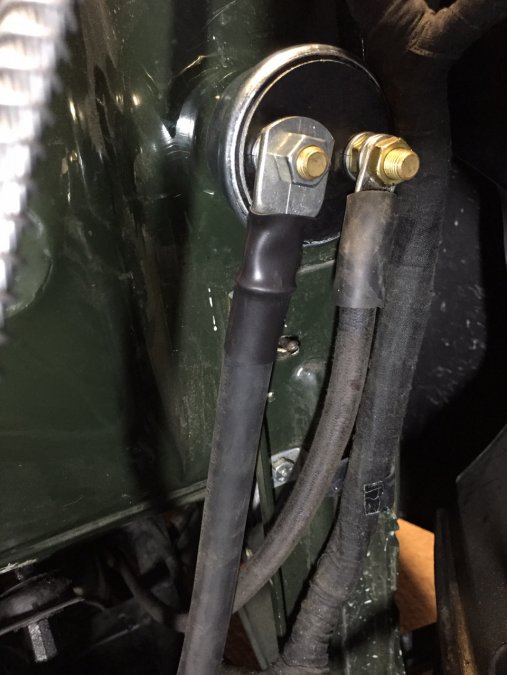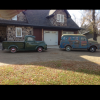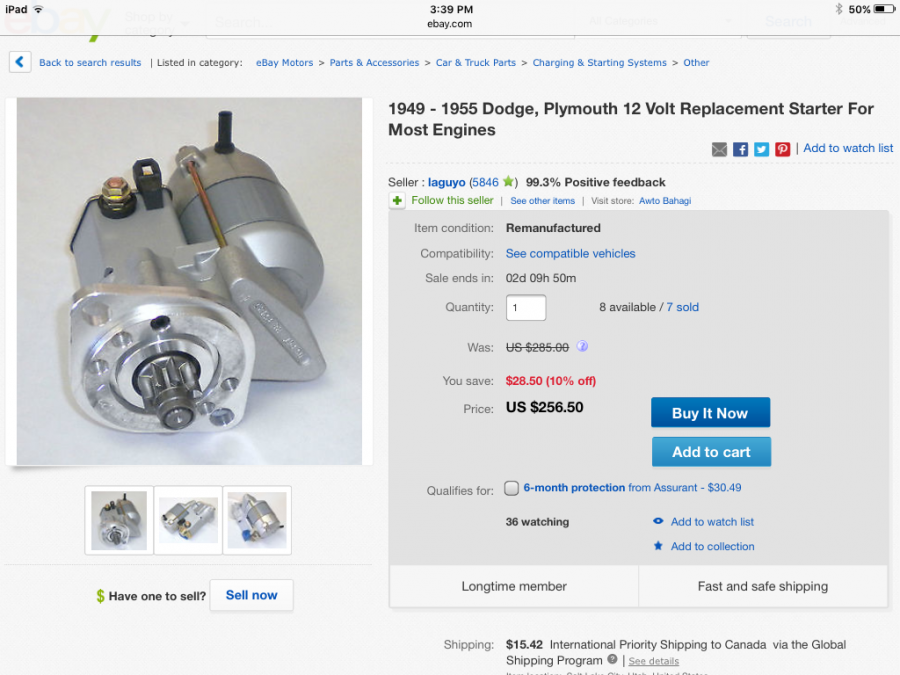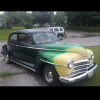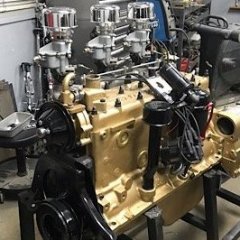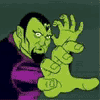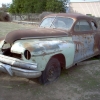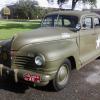Search the Community
Showing results for tags 'starter'.
-
switching from a 218 to a chrysler 265, chrysler has a eight bolt crank, Understand a six hole flywheel with 146t will work for my 10 inch clutch and fours speed manual. would appreciate any information on starter issues and overall concept.
- 46 replies
-
I have a Dodge 230 flathead six out of 1957 Coronet. The tranny that came with it was fluid-drive. The engine now has a bell housing from a 1953 Dodge 1/2 ton truck and a S-10 five speed. I used the fly wheel from the Dodge Coronet, 172 tooth. The problem that I have is that when I installed the starter that came with the 1957 Dodge 230, 9 tooth and 1 inch diameter gear, it binds the flywheel and I cannot rotate the engine. I have also used a starter with a larger diameter gear but the same tooth count. I'm aware the teeth on the flywheel and the starter are binding. All of this is installed in my 1940 Plymouth Pickup. Any information on a fix for this would be greatly appreciated. Thanks
-
Hello all, Generator in my 1947 New Yorker can't keep up with the load when lights, radio and heater are on. Starter is turning slowly even when battery is fully charged. I believe that I have two matters to address: 1.Regarding generator- I would like to update to a positive ground one wire six volt alternator from Quality Power. 2.Regarding starter- since it seems like the starter is pulling too much power I need to get it overhauled - doesn't seem to be any MAX 4050's available now (if that is the right autolite starter for the straight eight). I am going to attach photos of the regulator in my car. From what I have read on this site installing an alternator does not appear difficult and after disconnecting the "A" and "F" poles on the regulator I should attach the alternator wire to the wire coming out of the regulator at the "B" pole. Diagrams made it look simple but when I looked under the hood the proximity of the relay and how its wiring may need to be modified with the new alternator has caused me to reappraise the "simplicity" of this job. Please take a look at the attached photos and diagrams - what will I need to do to the relay if I switch to an alternator? Also, what is the small cylinder on top of the generator? It is not in any pictures that I could find in the shop or parts manuals. Finally, any tips on a good place to send my starter to for a re-build? Many thanks and happy New Year!
-
Hello friends I ask your help to see If can sell me some starter mch 6106 to be able to finish my project of my b4b 1953 Let me know and thanks Ramon
-
Dis-assembled my starter for a cleanup and new coat of paint. Since I've only got two hands and felt the need to be super careful (as I'd never taken a starter apart before) I had the starter assembly sitting vertically on its Bendix end in a small box padded with bubble wrap to hold it still while I removed the end plate and then pulled the armature out of the housing...probably overdone but I like to be careful with stuff,...anyway being pleased with the dis-assembly at this point, I looked down and noticed 2ea washers laying on the table top which I had not seen until that moment. Each about the size of a quarter with one being metal and the other a poly insulator type material. A quick look at the starter diagram in my parts manual, and it showed the two washers, located on the armature shaft, on the commutator end of the armature. I have attached 2ea pictures from the manual showing the washers. The manual also shows the washers to be A): pp# 641 446 fiber washer at 2ea and B):pp#648 387 steel washer at 1ea...3ea total ?? (finally found the 2nd fiber washer located on the opposite end of the armature shaft). Two questions please for those in the know 1): I believe the steel washer needs to go next to the commutator and then the fiber washer would go on the end to insulate and keep bushing grease up inside the bushing and off the commutator and brushes. The manual also shows a note for the steel washer that reads "commutator end", so that would support the previous sentence as well, in my peanut head..?? 2): The exploded view diagram also shows a 3rd part listed as a pad, which would be located on the end of the armature shaft to pad the end of the shaft against the end plate. manual also shows the pad listed as "end felt". I would expect my felt pad dis-integrated a long time ago, anyway - what's the best thing to do here,....take a 1/16", 1/8", 1/4" thick piece of felt and cut out a small circular pad, grease it, and insert it into the bushing hole of the end plate, when I assemble ? I have some new moly wheel bearing grease I thought I would use for greasing the shaft/bushing ends, if that's not a good choice let me know, I would think any bearing grease would be ok, just not using too much !! but again if I was a pro at this I sure wouldn't be asking , would I ? And for those reading or wondering, nope I didn't paint the indivual ends of the starter housings and end plate where the main ground is delivered from the engine flywheel cover to and thru the starter when it is bolted up. Yeah - maybe there's hope for me yet.. All reply's and responses are welcome, I really appreciate learning from the forum which I do believe has some of the best knowledge anywhere - regarding these awesome old rides...I realize I can get pretty caught up in the details - but I'm hoping that attention to detail will not only further my education but also help make for a better overall car when done. thanks in advance for the help, again...!! Steve G.
-
So, I pulled my engine a few months ago (5 or 6 really) to fix some leaks, repair a framehorn crack/bad repair, and tidy up the engine compartment a little while attempting to install the dual carb setup with the 94's I have with my Shanafelt dual intake. Plagued with problem after problem, but at least the car runs now, though I am still needing to repair the distributor. I cleaned out my water passages, and boy did they need cleaning. I never should have been driving the car from the looks of it, LOL. Don't trust that others took the time to work on the motor as needed when you buy them. I did drive the car for a year and a half, but she got a little high on the temps when pulling grades around here, so I wanted to make sure she was cleaned out. When I pulled the rear core plug, I found that it was completely plugged from rust and sediment, at least 3 inches in. It took a while with a hot pressure washer to clean it out, but she finally spilled her guts and I got her back together. Put on a new water pump. I got the engine painted and re-installed, went to start with new to me dual intake setup and dual exhaust, fired and started, but couldn't get to run reliably. I then pulled the dual intake off and put the old single barrel on, to find that she was still acting the same. A little troubleshooting and found that the vacuum advance unit had rotted out, so I pulled one from my rebuild core and installed it. I got the car to run and drove it home from my buddies shop after installing a hacked together repurposed dual exhaust system using his two post lift...kinda made it home. On the ride home, I was driving it up one of the hills (grade really) and she started to spit and sputter, then would clear up, then sputter when turned, but run good on flat ground... ARGGGH! Made it home at midnight essentially, the night before my clubs car show. Needless to say, went to show without my ride, but I'd already taken up my buddies 54 Chevy Wagon, so I had a vehicle to drive. I took another look at it this past weekend, because the starter seemed to be giving me trouble. Sure enough the bendix was not retracting on the starter and was staying engaged. I also noticed that the motor would try to rotate backwards a bit when the starter button was disengaged. I originally thought this was related to the starter problem, but when I pulled the distributor cap to aid in removal of the starter, I saw that the breaker plate appeared askew. Sure enough it was loose from the bearing. I pushed it back into place, still unsure how exactly it sits in there, I think it may be a pressfit, so maybe the tolerances are worn. I have another old distributor I am going to see if I can make work, otherwise she may be down for a while until I can afford an upgrade to the Langdon 12v GM style Distributor. A real shame, as I will then have 2 positive ground pertronix units i'll have basically wasted my money on, at least until I get the 1941 Military Dodge WC-12 and WC-21 that I have kind of been told I can get when I can afford them. I'm just a little frustrated that the car had been doing wonderfully until I decided to "freshen her up a little". I almost think I never should have touched her, made her kinda irritable
- 13 replies
-
- distributor
- starter
-
(and 2 more)
Tagged with:
-
I just finished installing a remote start switch on the inside firewall pad, just left of the clutch pedal. My battery is under the seat and it's a real pain to disconnect it, everytime I park the wagon in the shop. i've seen too many vehicle fires to feel comfortable leaving everything connected when I'm away. I decided to go with 4 ought (4/0) conductor from the back of the switch to the starter. I used my existing YnZ Wiring cable that came with the '40 Plymouth wiring harness because it already had the correct terminals (battery post and 3/8" end) to go from the battery to the switch. I've never had any electrical problems since the install a few years ago, however the YnZ conductor is obviously less beefy than the new one (2/0?). I know with 6 volt you want to minimize voltage drop, so I was thinking about replacing the other 3 ft cable with 4/0 conductor, but wire this large is pricey, so if it won't matter, I'll obsess on something else and leave it alone! Opinions?
-
Greetings everyone, I'm in the midst of an engine swap for my 1947 Plymouth and I'm needing some help with my starter. Upon close inspection, it seems like the bendix/screw shaft isn't fully retracting. As you can see in the picture, that's as far down as it will go, maybe a quarter inch. Should it freely move all the way down the screw? The annoying thing is I can't see what's preventing it from moving. Thanks in advance!
-
Has anyone had any experiance with these or opinions , I have swapped out this style on 318-360 before but this says it fits my 52 L6 ?
-
I'm the recent owner of a 1951 Dodge B3B and I had it up and running great until a few weeks ago. Among other issues, the starter stopped working. My mechanic took it out and sent it over to a local rebuilder who eyeballed it from across the room as a Dodge truck starter. Long story short, the armature is broken and it doesn't seem like anybody makes a replacement starter for these trucks. Does anybody have a line on where to find one (new or used, at this point I don't care)? Or of there's any kind of adapter to use a different starter or something like that I'm open to any and all solutions. The truck does have the original 218ci motor. It has been converted to 12V negative ground but the entire truck was professionally rewired, including starter cables. The original starter was working fine until this happened and it used to start the truck great with the extra umph of the 12V battery.
-
Hello there, I come here seeking wisdom on a possible starter issue. I would like to apologize in advance for my lack of technical terms, but I will try to explain myself the best I can. I took apart my Plymouth's Starter this week, I noticed the pinion gear had flywheel marks all along the side on the gear on it's housing. I feel as if the pinion gear bottom housing is hitting the flywheel when it engages, but this might just be normal. One thing I noticed is the "worm gear" the pinion rides in has a "lock" that prevents the pinion from retracting once it rides out past a certain point, as if locking the gear in an engaged position. When I bench tested the starter the pinion got stuck in the engaged position, I had to take the pinion assembly apart in order to retract it. What was the purpose of that design? I took the starter out after my car was not turning over consistently when trying to start but with the starter removed the engine turned by hand, I had the battery charged but was not satisfied. The brass bearings are very worn out and are being replaced and one of the field coils has a rip on its cloth tape, may have been caused by the worn bearings. I am thinking that those markings mentioned earlier may have been caused by the worn bearings as well. any knowledge on the subject is greatly appreciated.
-
I'm currently trying to get a 51 b series going and all I need to do is hook up the cables from the battery to the starter(foot starter), but all there is, is a spot right in front of the lever I'm assuming for the positive. Am I correct on this? Second I don't have the key for the ignition and I was wondering if I could cut the wires and install a toggle switch? Any answers appreciated
-
So I have been working on my 52 dodge coronet, trying to get it ready to cruise to Iowa in May. Few weeks ago I installed a Champion radiator, new water pump, hoses & thermostat. I started the car to check for leaks & to make sure everything was working properly. No issues. I decided then to change the battery cables since they looked to be in poor shape. I had some left over 2 ga wire from my dual battery/ winch install on my 4x4 truck so I ordered some battery terminals from Speedway & got to work. Got the cables made & installed them. I also replaced the cable that goes from the starter solenoid to the starter. When I went to start the car it would only turn over like 1/2 a turn & then stop. Released the key and tried again. Same thing. Checked voltage of the battery and it reads just over 6 volts. Thought maybe we screwed up a cable or something so I just went and put all the old cables back on. It still does the same thing. Am I missing something here? Has anybody had a similar experience? After work today I'm going to put the charger on the battery just in case (battery is pretty new) clean all the connections real good and put new star washers on everything. The car is still 6 volt positive ground. I have a cable going from + battery terminal to the cylinder head (with a star washer). The - terminal cable goes to the starter solenoid. Then another cable from starter solenoid (with star washer) to the top of the starter. Thanks in advance
-
Does anyone have info on the 1948 starter. I think mine might be a little warn and either need replacement parts like brush, armature, and such. I'm kind of looking for a repair kit or replacement but I'm not finding anything from parts places on line. its a 1948 Plymouth Special Deluxe 2 door coupe if that makes a difference with original motor partly converted to 12v. I plan on rewirning the system to all 12 volt minus the reducers needed for the gauges. Any info would be appreciated. Thank you
-
Hi, seems very difficult to get a 51 Desoto starter solenoid rebuilt ( it is the one mounted on the starter and has a lever to push forward the starter gear) so I wondered if other years of starters will fit. For example will a 49 Chrysler starter ( which seems much longer) fit and of course it will have a separate solenoid . Is there a preferred place to mount a separate solenoid? Are there any solenoid kits available? Thank you, Michael
-
Im using a 250 25inch block bellhousing in order to mount a T5 5 speed transmission into a 218 23in block. The bellhousing matched up just right allowing me to use the starter and flywheel that came from the 250 block a buddy of mine recommended that I dial in the bellhousing in order to make sure the transmission is perfectly alligned with the crank/flywheel etc.. He also mentioned to look into using offset dowels in order to get it all perfectly dialed in..... dowel pins?!! I didnt even think about those when I put my flywheel, clutch, and bellhousing on the motor but I do see the need for them. The problem Im having is that the holes for the dowels are different between the bellhousing and the 218 block? The 218 block has much larger diameter where the dowels go in. I hope this is not a stupid question.. Are the dowels really necesary? If so do they make dowels with different sizes on each end? Is it necessary to dial in the bellhousing if the transmission shaft slides in smoothly? I know they make offset dowels to allow you to finely adjust any offset.
- 13 replies
-
- bellhousing
- dowel
-
(and 2 more)
Tagged with:
-
I have a starter for my '47 Dodge, was in the trunk when I bought it (maybe that's why it didn't start). Anyways... looking to bolt it back up, and realized that there are no bolts. Anyone happen to know the size/thread I'd need? Thanks.
-
Was fortunate enough to pick up a 47 d24 coupe but it has no starter, wondering if anyone knows what compatible starters would mate up with the 230/fluid drive trans that is in it. Its driving me nuts. Any help would be appreciated.
-
First time post- new member! I'm salvaging a destined rat rod back to a P-14C OEM and can't figure out the linkage on the yoke to the bendix button. Here's a pic of what was there- that certainly ain't right and offset significantly. Is the yoke bent? Anybody out there have a pic or diagram of what it is supposed to be? I'm thinking the 46-48s are about the same hook-up. Thanks in advance ..
-
I just picked up a 1953 Dodge Pickup with a flathead six in it. Based on what I can find on the internet and in the forums, I'm pretty sure the engine is out of a '58 plymouth. The boss is stamped with LP6*7621*, and there is a casting number of 1484929-41 on the block with a date code of 6-17-58. The head number is 1326306-3, which looks like a 53 Dodge head. The starter is also a six volt 1953 dodge starter. (PN 1383847) I'm guessing that the engine block was replaced at some point but the original head and starter were kept. The truck was converted to 12v, but I don't think the '53 starter had the same pitch on the teeth as the '58 flywheel... the ring gear is trashed and there are a lot of metal filings in there. The starter appears to be shorted internally as well. Does anyone know where I can get a replacement flywheel? I'll need to replace the starter as well, but I want to make sure I get a matching set. I'm reasonably sure the engine is a 230. I'd appreciate any input. Thanks.
-
so first of all, i have a 52 dodge truck b3b, with the original 218 and 3 on the tree. resently i did the conversion from 6v to 12v. i changed the battery to neg. ground, the ignition coil with an exsternal resister, a delco 10 si alternator and got new voltage gauge cause i blew the old one. after doing everything truck starts right up. it started maybe 10 times after the switch. but know when i turn the key the voltage gauge says 12v, when i push the button to turn the engine the volage drops to almost nothing. wft? could i have alread y blown the 6v starter? or maybe the distibitor? i dont know. all help would be greatfully apperiated. man i wish this thing had spell check.
- 7 replies
-
- 218
- conversion
-
(and 3 more)
Tagged with:


